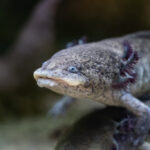Estonia, a captivating Baltic nation, often piques the curiosity of travelers and geography enthusiasts alike. The primary question that arises when considering this Northern European gem is: Where Is Estonia Located? Nestled in northeastern Europe, Estonia boasts a strategic and scenic location that defines its climate, landscape, and cultural interactions. This article delves into the precise geographical coordinates of Estonia, exploring its borders, key geographical features, and the unique aspects of its environment.
Unpacking Estonia’s Geographical Position
Estonia’s location is intrinsically linked to the Baltic Sea. Imagine a map of Europe: trace your finger northward from Poland, across the Baltic States, and you’ll find Estonia gracefully extending into the Baltic Sea. This maritime position dictates much of Estonia’s character. To the north and west, the vast expanse of the Baltic Sea cradles its shores, shaping its coastline and influencing its weather patterns.
Looking closer at its continental neighbors, Estonia is bordered by Russia to the east. This boundary is largely defined by natural waterways – the Narva River and the expansive Lakes Peipus (Peipsi), Tyoploye, and Pskov, creating a natural eastern frontier. To the south, Estonia shares a border with Latvia, another Baltic state, fostering regional connections and shared history.
Estonian Landscape: A Tapestry of Glacial Features
The Estonian landscape is a direct result of glacial activity over millennia. As ice sheets retreated, they sculpted the terrain, leaving behind a diverse topography. Southern Estonia is characterized by moraine hills, rolling formations of glacial debris, creating a gentle, undulating landscape. Central Estonia features elongated hills with flattened tops, remnants of glacial river deposits formed during the ice melt. In contrast, Northern Estonia is distinguished by long, narrow swells, also glacial river deposits, adding another layer to the varied terrain. Sandy expanses across the country mark the former edges of glaciers, offering glimpses into Estonia’s geological past.
This glacial legacy results in a generally undulating relief throughout Estonia. Small hills dot the landscape, interspersed with a generous number of lakes and rivers. Forests blanket a significant portion of the land, especially in the south, contributing to a picturesque and mild environment. The average elevation is modest, around 164 feet (50 meters) above sea level, with only a small fraction exceeding 300 feet (90 meters). For those seeking higher altitudes, the southeastern Haanja Upland is home to Suur Munamägi (Great Egg Hill), Estonia’s highest point, reaching 1,043 feet (318 meters).
Estonia is also rich in water resources. A network of rivers crisscrosses the country, flowing towards the Gulf of Finland in the north, the Gulf of Riga in the southwest, and into Lake Peipus in the east. The Pärnu River is the longest, stretching approximately 90 miles (145 km). Other significant rivers include the Pedja, Narva, and Kasari. Lake Peipus, shared with Russia, is the largest lake, covering about 1,370 square miles (3,550 square km). Lake Võrtsjärv is another prominent lake, situated in south-central Estonia.
Estonian Climate: Temperate and Influenced by the Sea
Estonia’s climate is classified as temperate and humid, a notable contrast to regions at similar latitudes further east in Russia, which experience more continental climates. Estonia’s location places it directly in the path of air masses originating from cyclonic winds over the North Atlantic Ocean. These winds bring relatively warm air during winter and cooler air in summer, moderating temperature extremes. Coastal areas in the north and west tend to be milder than inland regions, while eastern and southeastern Estonia experience a slightly more continental climate, with greater temperature variations.
January temperatures average between 17 to 23 °F (−8 to −5 °C), while July temperatures range from 61 to 63 °F (16 to 17 °C). Annual precipitation is moderate, ranging from 24 to 28 inches (600 to 700 mm). Combined with low evaporation rates and minimal elevation changes, this precipitation contributes to areas of waterlogging in certain regions. Overall, Estonia’s climate is generally conducive to agriculture.
Estonian Biodiversity: Forests, Wildlife, and Conservation
Forests are a defining feature of Estonia’s natural landscape, covering nearly half of the country. Mixed forests dominate, comprising around 90 native tree and shrub species. Pine, fir, birch, and aspen are the most common tree types, while oak, maple, elm, and ash are less prevalent. Scots pine is the most widespread native tree species. Meadows also cover substantial areas, alongside marshes and swamps, which are biodiversity hotspots, harboring a quarter of Estonia’s 1,500 plant species.
Estonia is home to approximately 60 mammal species. The largest is the elk, and other common mammals include roe deer, red deer, and wild pigs. In the northeastern forests, bears and lynx can be found. Foxes, badgers, otters, rabbits, hare, mink, and nutria are also relatively common, particularly along riverbanks. Fish are a significant resource, with commercially important species like cod, herring, salmon, eel, and plaice inhabiting Estonian waters. Birdlife is abundant and migratory, with over 300 identified species, though few are year-round residents.
Since regaining independence in 1991, Estonia has made significant progress in environmental protection. Efforts to reduce air and water pollution have been successful, and forest cover has expanded. Approximately ten percent of the country is designated as nature preserves, demonstrating a commitment to preserving Estonia’s rich natural heritage.
In conclusion, Estonia’s location in northeastern Europe, bordering the Baltic Sea, is fundamental to understanding its geography, climate, and ecology. From its glacial landscapes to its temperate climate and diverse wildlife, Estonia offers a unique blend of natural beauty and strategic significance within the Baltic region. Its position makes it a fascinating destination for those seeking to explore the wonders of Northern Europe.

